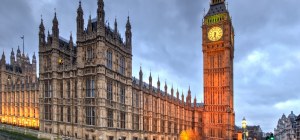70: Looking beyond Brexit – they’ll soon be parting ways

Aaron Nelson Legal Director
While the UK takes further steps to prepare its statute book for Brexit, the EU has been trying to reach agreement on the nominations and appointments for its top jobs.
EU law in the UK after Brexit
Schedule 5 of the European Union (Withdrawal) Act 2018 provides as follows:
- The Queen’s Printer must make arrangements for the publication of each relevant instrument that has been published before exit day by an EU entity, and the relevant international agreements.
- ‘relevant instrument’ means:
- an EU regulation;
- an EU decision; and
- EU tertiary legislation.
- ‘relevant international agreements’ means:
- the Treaty on European Union;
- the Treaty on the Functioning of the European Union;
- the Euratom Treaty; and
- the EEA agreement.
These provisions were brought into force by the European Union (Withdrawal) Act 2018 (Commencement No.3) Regulations 2019 from 3 July, placing the Queen’s Printer under a statutory obligation to make arrangements for the publication of EU legislation relevant to the UK after exit.
In addition, the Queen’s Printer may make arrangements to publish other documents that might be considered useful – for instance the power in Schedule 5, paragraph 3, which refers to decisions of, or expressions of opinion by, the European Court, or the power in Schedule 5, paragraph 4, which refers to any other document published by an EU entity.
Consequently, two new services have now been launched by the National Archives (more details about how this was done can be found here), operating in the capacity of Queen’s Printer:
- first there is a new online collection of documents and data, relevant to the UK, drawn from the EUR-Lex website (the official source of EU law), called the EU Exit Web Archive. It is delivered as part of the Government’s official web archive (but is not easily discoverable from that archive’s front page). The EU Exit web archive contains a wide selection of documents taken from EUR-Lex (the European legislation website), including Treaties, legislative documents, the Official Journal of the EU, case law and other supporting materials, and judgments of the European Court of Justice in English, French and German. The collection will continue to be updated up to EU exit but, once the UK has left the EU, it will be frozen and act as a permanent historical record of the relevant EU documents as at Brexit-day; and
- secondly, the National Archives has added legislation originating from the EU to www.legislation.gov.uk, the UK’s official legislation website. This brings together EU legislation that will be retained in UK law on exit with details about the corrections/changes made by UK statutory instruments for EU exit and will show the ‘as amended’ UK applicable versions of the texts. This includes a full timeline of changes pre-exit and will incorporate the amendments made by UK legislation post exit, with annotations so users can verify the text of the legislation for themselves. This legislation will be further updated with any amendments made by the UK, post-exit.
Jeff James, Chief Executive, Keeper of Public Records and Queen’s Printer, The National Archives said:
‘Our aim is to ensure we have both a comprehensive, permanent record of the law at EU exit, and, with legislation.gov.uk, to provide an ongoing service now and for the future. As legislation changes over time, legislation.gov.uk offers great value, aiding legal certainty for all those who are seeking to understand what the law is and will be post exit.’
The EUR-Lex website will of course continue carry EU legislation as it currently applies to the European Union – and not to the UK – after Brexit.
EU Top Jobs
Many of the EU’s top jobs are up for grabs this summer. We summarise the details below.
| Job | Incumbent | Appointment process | (Likely) Successor | Term | Brexit views? |
|---|---|---|---|---|---|
| European Commission President | Jean-Claude Juncker | Article 17(7) of the TFEU. See further below. | Ursula von der Leyen (German minister of labour and social affairs (2009 – 2013) and defence minister since 2013). | Appointed for 5 years from November 2019 | An EU federalist, who represents continuity with Juncker. Opposes a 'no deal' exit and would allow a further extension) but has taken a tough line on Brexit concessions, particularly over the Irish backstop and defending the integrity of the Single Market. |
| European Council President | Donald Tusk | Appointed by the European Council | Charles Michel (Belgium’s prime minister since 2014) | 2½ year term from December 2019 | Opposed current extension to 31 October. |
| European Central Bank President | Mario Draghi | Appointed by the European Council by a qualified majority | Christine Lagarde (French economy, finance and industry minister (2007-2011) and MD of IMF since 2011). | 8 years from November 2019 | Has emphasised negative impact of Brexit on the UK economy, particularly under 'no deal'. |
| High Representative for Foreign Affairs and Security Policy | Federica Mogherini | Appointed by the European Council by a qualified majority, with the agreement of the Commission President-designate | Josep Borrell (Spanish foreign minister in the Socialist Government and EP President 2004 – 2007) | 5 years from November 2019 | Opposed concessions for the UK but doesn’t want a disorderly Brexit. |
| European Parliament President | Antonio Tajani | Elected by the European Parliament | David-Maria Sassoli (Former EP vice-president, a member of the Progressive Alliance of Socialists and Democrats Group.) | Already appointed for 2½ years from July 2019 | Described Brexit as 'painful', but considers negotiations with the UK should be carried out with 'good sense and a spirit of dialogue and friendship'. |
Juncker’s successor: a controversial choice?
The most controversial of these is Ursula von der Leyen, who will succeed Jean Claude Juncker as European Commission President, not because she is a particular divisive figure, but rather because of how she came to be nominated.
The process for choosing the President is set out in Article 17(7) of the TFEU, which says:
‘Taking into account the elections to the European Parliament and after having held the appropriate consultations, the European Council, acting by a qualified majority, shall propose to the European Parliament a candidate for President of the Commission. This candidate shall be elected by the European Parliament by a majority of its component members. If he does not obtain the required majority, the European Council, acting by a qualified majority, shall within one month propose a new candidate who shall be elected by the European Parliament following the same procedure.’
While article 17(7) doesn’t expressly say so, the European Parliament and the Commission both considered that the Spitzenkandidaten process (‘lead candidates’ process in German) should be used, as it was in 2014 when Juncker was elected. Under that process, each of the six main political groupings in the Parliament proposes its preferred candidate and the Council chooses from that shortlist.
The Council didn’t agree, stating that the process did not automatically apply, and it was an ‘autonomous competence of the Council to nominate the candidate’. After 50 hours of discussions between Council members, they rejected all of the Parliament’s candidates and Ursula von der Leyen was proposed as a compromise candidate instead. Theresa May, at what will be her final summit, unsurprisingly took a ‘low key’ role.
Von der Leyen’s nomination speech to the Parliament was reportedly greeted with a mixture of applause and boos, but on 16 July the Parliament nevertheless approved her appointment by 383 votes to 327, a slim margin of nine votes, given she needed the backing of 374 out of 747 MEPs.
‘They’ll soon be parting ways’ (Pearl Jam, Parting Ways)
Enjoying the blog? Why not try the Brexit Blog playlist on Spotify.









